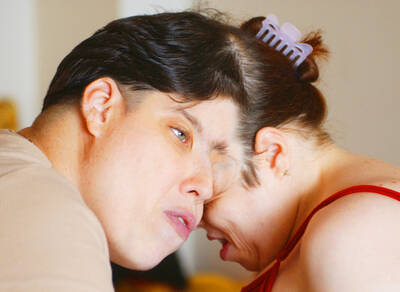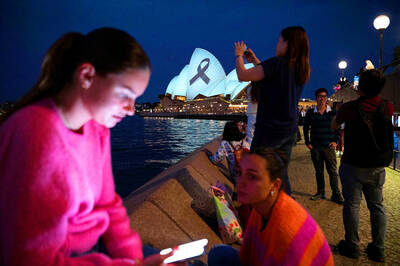Millions of Britons are causing themselves “silent harm” through hazardous drinking at home, experts have warned, as figures reveal levels of “higher risk” alcohol consumption have soared during the COVID-19 pandemic.
While the new figures concern only England, the phenomenon has been seen in all parts of the UK.
Eight million people in England are drinking so much wine, beer or spirits that it is harmful to their health, British Office for Health Improvement and Disparities data showed, with a large increase in the numbers drinking at levels considered to be dangerous.
Julia Sinclair, the chair of the addictions faculty at the Royal College of Psychiatrists, said the switch to drinking at home during the pandemic was partly to blame for the rise, with drinking sessions sometimes lasting several hours longer than they would in a bar.
Data based on YouGov surveys showed that 18.1 percent of adults in England were drinking at “increasing or higher risk” in the three months to the end of October last year, which equates to 8 million people.
That is much higher than in February 2020, before the pandemic, when 12.4 percent, or about 6 million people, drank at those levels.
In October 2019, 11.9 percent, or about 5 million people, were drinking at those levels.
The UK’s National Health Service recommends that adults consume no more than 14 units of alcohol per week.
Increasing or higher-risk drinking is defined by the alcohol use disorders identification test, which asks questions about people’s drinking habits. It looks at how often people drink, how many units in one session, whether they ever feel guilty and whether they sometimes miss out on usual activities due to drinking.
Sinclair said the latest data, which suggests more than twice as many men as women are drinking alcohol at hazardous levels, showed people were still dealing with uncertainty and anxiety caused by the pandemic, while some had formed habits involving alcohol.
Asked if current drinking levels could be considered the “new normal,” Sinclair told PA Media: “The best, most realistic, scenario is that the higher-risk drinkers go back over the next probably five years to normal risk drinking — back to where they were — but people won’t just suddenly flip back to where they were, none of us suddenly flips back.”
“What we’re going to see is that some people who were perhaps drinking at a higher risk, but weren’t physically dependent, will have pushed themselves into being physically dependent, and they’re not the group who can suddenly wind back from this,” she said. “What was really clear was that just even nine months of drinking, as we saw in 2020, was enough to push a whole load of people over the edge. We’ve yet to see the data from this year, but my guess anecdotally would be that it is going to be substantial.”
Sinclair said some people who never drank except when they went out were now drinking at home.
“You then get some periodic times when you can also drink in the pub,” she said. “Do you suddenly change your behavior to not drinking at home or does drinking in the pub now become the add-on?”
The data suggests people were carrying on drinking what they began to drink at home and then drink more on top of that, Sinclair said.
Many have not yet reached the stage where they realize they have a problem and are causing themselves “silent harm,” she said.
Drinking at home “can go on for hours” and people are not keeping track of their measures, she added.
Patients were coming into hospitals in a “much more severe” state, Sinclair said.
“We’ve had more patients going into delirium tremens — the really kind of life-threatening part of alcohol withdrawal — who end up in intensive care,” she said. “I have seen more people in our hospital in that state [during the pandemic] than I’ve seen in the six years prior to that.”

Republican US lawmakers on Friday criticized US President Joe Biden’s administration after sanctioned Chinese telecoms equipment giant Huawei unveiled a laptop this week powered by an Intel artificial intelligence (AI) chip. The US placed Huawei on a trade restriction list in 2019 for contravening Iran sanctions, part of a broader effort to hobble Beijing’s technological advances. Placement on the list means the company’s suppliers have to seek a special, difficult-to-obtain license before shipping to it. One such license, issued by then-US president Donald Trump’s administration, has allowed Intel to ship central processors to Huawei for use in laptops since 2020. China hardliners

Conjoined twins Lori and George Schappell, who pursued separate careers, interests and relationships during lives that defied medical expectations, died this month in Pennsylvania, funeral home officials said. They were 62. The twins, listed by Guinness World Records as the oldest living conjoined twins, died on April 7 at the Hospital of the University of Pennsylvania, obituaries posted by Leibensperger Funeral Homes of Hamburg said. The cause of death was not detailed. “When we were born, the doctors didn’t think we’d make 30, but we proved them wrong,” Lori said in an interview when they turned 50, the Philadelphia Inquirer reported. The

RAMPAGE: A Palestinian man was left dead after dozens of Israeli settlers searching for a missing 14-year-old boy stormed a village in the Israeli-occupied West Bank US President Joe Biden on Friday said he expected Iran to attack Israel “sooner, rather than later” and warned Tehran not to proceed. Asked by reporters about his message to Iran, Biden simply said: “Don’t,” underscoring Washington’s commitment to defend Israel. “We are devoted to the defense of Israel. We will support Israel. We will help defend Israel and Iran will not succeed,” he said. Biden said he would not divulge secure information, but said his expectation was that an attack could come “sooner, rather than later.” Israel braced on Friday for an attack by Iran or its proxies as warnings grew of

A prominent Christian leader has allegedly been stabbed at the altar during a Mass yesterday in southwest Sydney. Bishop Mar Mari Emmanuel was saying Mass at Christ The Good Shepherd Church in Wakeley just after 7pm when a man approached him at the altar and allegedly stabbed toward his head multiple times. A live stream of the Mass shows the congregation swarm forward toward Emmanuel before it was cut off. The church leader gained prominence during the COVID-19 pandemic, amassing a large online following, Officers attached to Fairfield City police area command attended a location on Welcome Street, Wakeley following reports a number